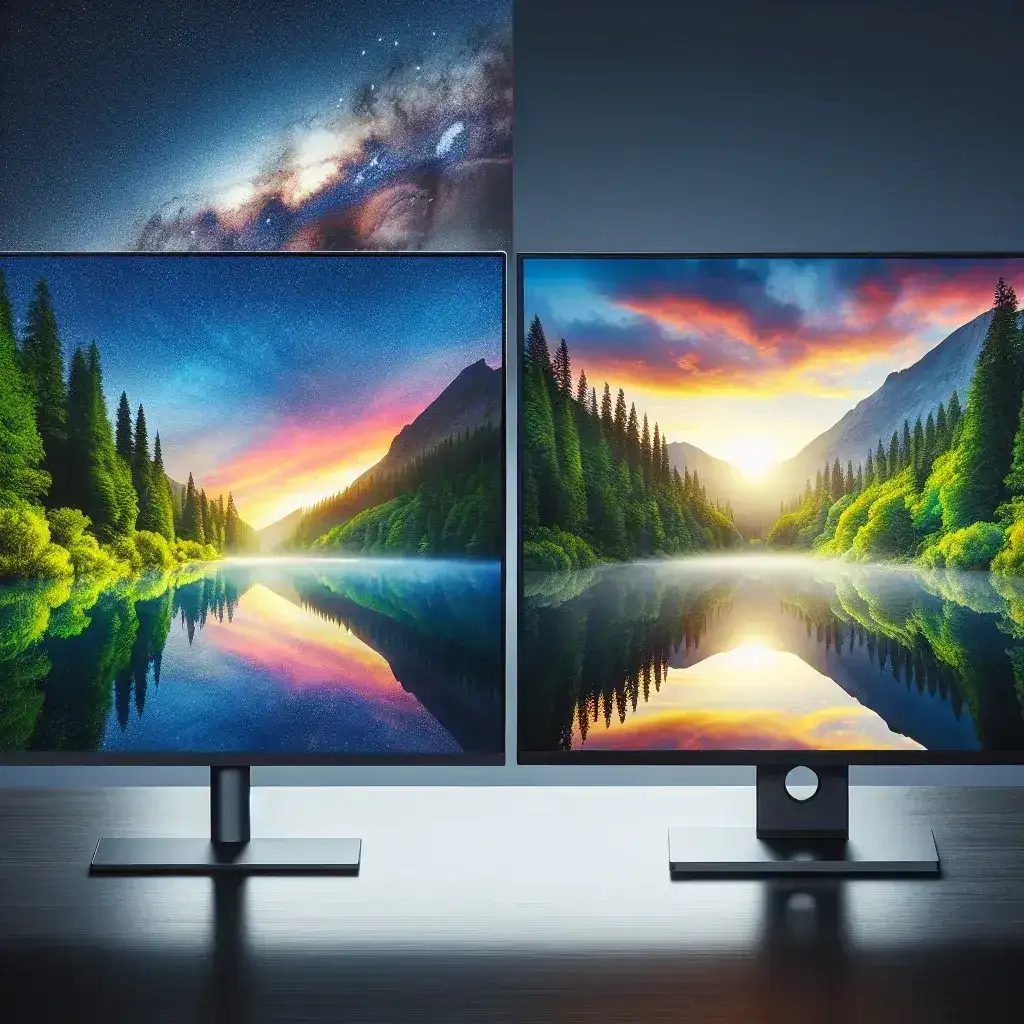As we continuously immerse ourselves in digital content, the quality and type of monitor we use has become increasingly important. This brings up a common question: are LED monitors better than LCD monitors? To answer this, it’s crucial to understand the fundamental differences between these two technologies, as well as their respective pros and cons. Here is a detailed comparison to help you make an informed decision.
Technology Overview
LED Monitors
LED stands for Light Emitting Diodes. LED monitors are essentially an advanced form of LCD monitors, as they use LEDs for backlighting instead of the traditional cold cathode fluorescent lights (CCFL) used in standard LCD monitors. This advancement allows for thinner, more energy-efficient screens capable of displaying sharper images and more vibrant colors.
LCD Monitors
LCD or Liquid Crystal Display monitors use liquid crystals sandwiched between polarizing filters. When an electric current passes through these crystals, they align to allow specific wavelengths of light to pass through, creating the image you see on the screen. Traditional LCD monitors rely on CCFL backlighting, which is generally less efficient than LEDs.
Key Differences
Below is a comparison table highlighting the key differences between LED and LCD monitors.
| Feature | LED Monitors | LCD Monitors |
|---|---|---|
| Backlighting | LED | CCFL |
| Power Consumption | Lower | Higher |
| Image Quality | Higher | Slightly Lower |
| Thickness | Thinner | Thicker |
| Longevity | Longer Lifespan | Shorter Lifespan |
| Price | Varies (Generally Higher) | Varies (Generally Lower) |
Advantages of LED Monitors
- Energy Efficiency: LED monitors consume less power, making them an environmentally-friendly option.
- Image Quality: They offer better contrast ratios, sharper images, and more vibrant colors.
- Design: LED technology allows for slimmer designs, making your workspace look clean and modern.
- Longevity: LEDs have a longer lifespan compared to CCFL, ensuring your monitor lasts longer.
Disadvantages of LED Monitors
- Cost: LED monitors are generally more expensive than their LCD counterparts.
- Heat Emission: While more efficient, some LED monitors can emit more heat compared to traditional LCD monitors.
Advantages of LCD Monitors
- Cost-Effective: Typically, LCD monitors are less expensive, making them a good option for budget-conscious consumers.
- Availability: LCD monitors have been around longer and are widely available.
- Adequate for General Use: For general computing tasks, LCD monitors are more than sufficient.
Disadvantages of LCD Monitors
- Energy Consumption: LCD monitors consume more power compared to LED models due to the CCFL backlighting.
- Bulkier Design: LCD monitors are generally thicker and heavier, which can be a drawback for modern, minimalist setups.
- Lower Image Quality: The image quality, while still good, is not as sharp or vibrant as that of LED monitors.
Best Scenarios to Use LED Monitors
Because of their superior image quality and efficiency, LED monitors are exceptionally suitable in the following scenarios:
- Gaming: Gamers will benefit from the higher refresh rates, better contrast ratios, and superior color accuracy.
- Professional Graphics Work: Graphic designers, video editors, and photographers will appreciate the enhanced image quality and color fidelity.
- Modern Office Environments: For those who desire a sleek, minimalist workspace, the slim design of LED monitors is ideal.
Best Scenarios to Use LCD Monitors
LCD monitors are still a viable option for a range of tasks, particularly if cost is a factor:
- General Office Work: For tasks such as word processing, spreadsheets, and web browsing, LCD monitors are perfectly adequate.
- Budget-Conscious Consumers: If budget is a primary concern, LCD monitors offer good performance at a lower cost.
- Older Systems: Some older computers may work better with LCD monitors in terms of compatibility.
Final Verdict
In conclusion, whether an LED monitor is better than an LCD monitor largely depends on your specific needs and budget. LED monitors generally provide better image quality, energy efficiency, and long-term value but come at a higher upfront cost. On the other hand, LCD monitors remain a practical choice for basic productivity tasks and budget-conscious users. Ultimately, both have their merits, and your decision should align with your individual requirements.

